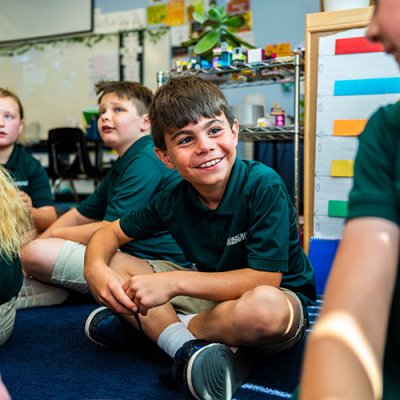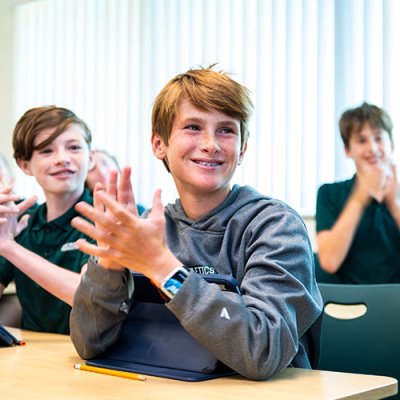

Case Study: BLENDED HUMAN GEOGRAPHY
SHORECREST PREPARATORY SCHOOL’S first blended learning course, AP Human Geography, taught by Kam O'Horo, explores the patterns and processes that have shaped human understanding, use, and alteration of the Earth’s surface. Topics include such things as the nature and perspectives of geography, population, cultural patterns and processes, political organization of space, agricultural and rural land use, industrialization and economic development, and cities and urban land use.
The course meets three times per week and students participate in a variety of online activities in and out of class. The entire course is housed on Moodle, a free and open-source e-learning software platform, and is virtually paper free.
In its fourth successful year, AP Human Geography has become increasingly popular with students. Every two weeks, students tackle a new course topic and a variety of online elements are used to aid comprehension. Early in the year, students are introduced to Google Docs, which is used for note taking, group collaborations, and interactive and student-centered discussions and lectures. Voicethread is also used periodically to present material and pose discussion questions in the style of the flipped classroom. My favorite part of this course is that students have access to and are encouraged to use a variety of diverse online resources including articles, databases, videos, podcasts, simulations, and tutorials. Some of these resources are used in class to supplement or illustrate information found in the online text. Others are used by the students to create and regularly maintain a wiki page on a country of their choice that specifically addresses all of the course topics. Students also use information found to create teacher-directed online forum posts, which include posing thoughtful questions to classmates about their research and responding to others in turn. Google Earth is used regularly with mathematical location activities and with the creation of sightseeing tours for things like the diffusion of the English language or of an element of pop culture. From time to time, we also Skype with experts in the topics we are tackling or to further develop our understanding.
Point values are assigned to each activity according to difficulty and length and a rubric clearly defines requirements for forums. Tests, online and consisting of multiple choice and essay questions, are taken in class under teacher supervision. If my favorite part of this course is resource access, my second favorite aspect is that it teaches students to be independent, active, and interactive learners. Almost all of the above-mentioned activities take place out of class with the student responsible for the quantity and quality of learning taking place. Whether they like it or not, students are involved with every aspect of learning in this course and so far it has been a very successful and fun adventure.
REQUIREMENTS
Students need Internet access at home, Google, Wikispaces and VoiceThread accounts; schools need computers with Internet access; teacher needs access to Skype.
RESOURCES
GOOGLE DOCS: https://docs.google.com
GOOGLE EARTH: http://earth.google.com
MOODLE: http://moodle.shorecrest.org
RUBISTAR: http://www.rubistar.com
SKYPE: http://www.skype.com
VOICETHREAD: http://voicethread.com
WIKISPACES: http://www.wikispaces.com
Original story on nais.org.
























